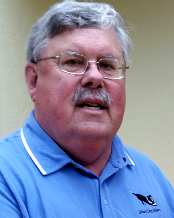
SMART DOG MININGTM
It
takes a smart dog to find hidden treasures
An Introduction to the Principles of Jigging
This being an introduction, the following is a general overview
description of the principles behind jigging.
For a more detailed discussion of the principles see
Introduction to Gravity Concentrating.
Jigs operate on the principles of particle motion under
pulsed-flow hindered-settling conditions. The separating mechanisms
are typically: hindered settling, differential acceleration, and
consolidation trickling.
The liquid pulse in the jig, in its ideal form, is essentially a
modulated sine wave (figure 2).
This wave is recommended by a number of authors from research
or experience, but basically for the following reasons:
1)
The settling considerations are those described by hindered
settling, with the difference that if the pulse frequency is high
enough only the largest and heaviest particles reach their terminal
velocities at any part of the jig stroke.
2)
The separation of minerals according to specific gravities is
brought about by the combined acceleration of gravity and liquid
pulsation, upward and downward, according to the formula 1, where
p" is the apparent
density (g/cc) of the medium, and
p is the specific gravity
of the particle.
3)
In a true sine wave pulse, separation during the downward pulse
could be cancelled by that during the upward pulse.
Thus, the wave form must be modified to minimize separation
on the upward stroke by using a rapid upward pulse to lift the bed
as a dense mass so relative particle motion is kept as small as
possible.
4)
The downward pulse wave form must be modified to take full advantage
of the downward acceleration due to gravity, followed by the
acceleration caused by the downward liquid pulse.

Figure 3: Relative
positions of coal (black square) and rock (open circle) in water
during one jig cycle of ~1.2 seconds (after Vissac).
The basic design features are:
1)
A screen to support the mineral bed.
2)
A hutch or tank containing the liquid beneath the screen.
3)
A means of creating a jig stroke or relative motion between the
liquid and the bed.
4)
A method of modulating the jig-stroke wave form.
5)
A method of regulating water up-flow.
6)
A method of supplying feed to the bed.
7)
A method of removing products from above the screen and from the
hutch.

o
40+
years’ experience in the mining industry with strong mineral
processing experience in Precious metals, copper, industrial
minerals, coal, and phosphate
o
Operational experience in precious metals, coal, and phosphate plus
in petrochemicals.
o
Extensive experience studies and feasibility in the US and
international (United States, Canada, Mexico, Ecuador, Columbia,
Venezuela, Chile, China, India, Indonesia, and Greece).
